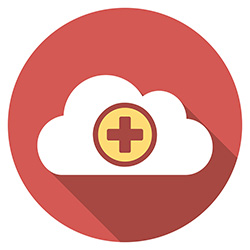Population health workers have a different goal than the average healthcare professional focused on patient care. Their efforts look to positively impact the lives of large sections of the population who have similar health needs.
The goal is to vastly improve healthcare outcomes of specific groups based on factors such as medical conditions, age and location. They look to identify common and systematic patterns in the health of specific groups, then develop plans to improve those people’s health and well-being.
A key component of population health falls into the health informatics area. Central to all population health initiatives is the collection and analysis of large sets of data that help them make recommendations based off what the data shows.
Professionals with education and experience in data collection are often best suited for the chief population health manager job.
Mayo Clinic Example
One example of population health in action comes from the Mayo Clinic’s Patricia E. Kern Center for the Science of Healthcare Delivery.
The center focuses on primary care for patients in southeastern Minnesota, including the clinic’s own employees. The team working on the project proves fairly typical of a population health team, including experts in primary care, health research, biostatistics, social and behavioral science, epidemiological and public health.
The team’s primary areas of focus also offer a typical example of where public health tries to make a difference. They include:
- Health promotion and disease prevention: Areas of focus include cessation of tobacco use, vaccinations and prevention or treatment of obesity.
- Early detection: Includes disease screenings for cancer, diabetes and substance abuse to name a few.
- Disease management: Includes wellness coaching, coordinating care and symptom management.
Job Duties and Education
In most cases, information for healthcare experts, as well as data from patients, is coordinated by a chief population health manager.
Managers need expertise in the proper collection and interpretation of data. They typically work for research organizations, large healthcare companies, insurance companies, nonprofits and government agencies.
The data is collected from a patient’s health records in all care settings, from primary doctors and specialists to hospital visits. That data is then compared with detailed analysis of patient outcomes in the same demographic, allowing for recommendations to doctors, other healthcare providers and insurance companies.
This evidence-based analysis can help decrease the amount of medical treatment patients require (particularly emergency care).
The chief population health manager has to find accurate ways to measure outcomes and ensure that the action taken on the data actually improves overall health.
The job attracts those with an affinity for both technology and healthcare. In some cases, those working in healthcare, such as nurses, decide to make a career switch, often for the opportunity to have their work impact larger segments of the population.
Others decide to study for the profession in school before entering the workforce. Health informatics degree programs, such as the one from the University of South Florida’s Morsani College of Medicine, combine tech skills with healthcare education.
Job Growth and Salary
The federal government, the primary and most reliable source on job salaries and growth, does not yet track chief population health managers specifically.
However, the U.S. Bureau of Labor Statistics (BLS) does track medical and health service managers, who focus on the planning, delivery and quality of healthcare.
The BLS reports that the average salary for medical and healthcare managers was $110,680 in May 2023. This is a nationwide number, and salary figures can vary depending on location and the size of the medical operation.
Job growth in the field is positive as well. The BLS projects 28% job growth, much faster than the average of all occupations..
Clearly, population health management offers those with an interest in health informatics an emerging career path to consider. Take the time to research degree programs and career options in the field and make the choice that best suits your life goals.
*National long-term
projections may not reflect local and/or short-term economic or job conditions,
and do not guarantee actual job growth. Information provided is not intended to
represent a complete list of hiring companies or job titles, and program options
do not guarantee career or salary outcomes. Students should conduct independent
research for specific employment information.




